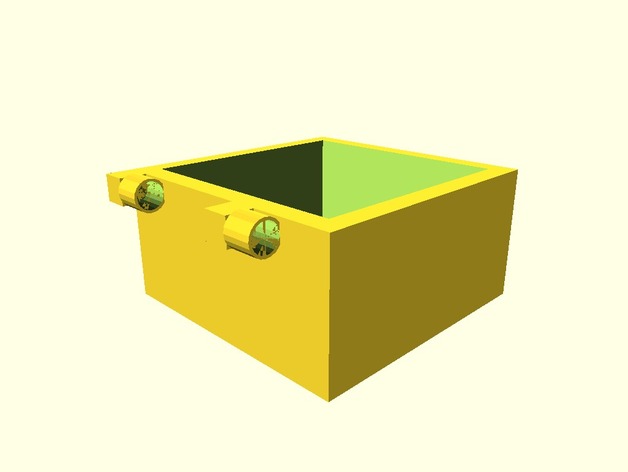
Tresure chest
thingiverse
My OpenSCAD treasure chest project comprises two parts: the box and the lid. The box is hollow, with two solid parts. The lid is a semi-cylinder featuring two hollow sections. I designed it to store extra keys and earphones, as I am highly organized and don't want to lose them; the treasure chest will help me keep things tidy. The box provides a hidden space for extra cash. To create the treasure chest, I started with the box part (the base unit). One requirement was to have a cube and an operation involving sphere, which the hollowed-out box fulfills. The initial scale was 10mm, as 10 is an easy number to work with and later adjust. Another criterion involved a cylinder, the sphere intersection and union operation. I then thought of a lid for my box in the form of a semi-cylinder. I saved my OpenSCAD file with the base and opened a new one. I decided to keep the parts separate to facilitate manipulation of the cylinder. Following steps on the website and the cheatsheet, I created an initial cylinder. By trying different ways of intersecting a cube and a cylinder to create a half-cylinder, I realized this with a quarter-cylinder. The original cylinder was rotated 90 degrees so that the curved part faced upwards. The cube was placed exactly on top of the quarter-cylinder, overlapping. Intersection retained only what had in common, the quarter of the cylinder. I copied this code and made a translation of -50 in the x direction instead of 50. This gave me a half-cylinder. The cube's dimensions were 100x100x100, and the cylinder's height was 100 with a radius of 50, all done through trial and error. Hinges were an afterthought. I had finished both pieces but a friend asked how they would attach. I thought then of simple hinges: a cylinder inside a hollow one. The recessed part was on the lid, and the solid cylinder was on the box. The solid cylinder attached to the box with a stretched cube in the z direction. The recessed cylinder attached with a stretched cube in the x direction. I printed both pieces, but the hinges didn't allow the chest to open properly. I thought about this issue and realized that the recessed parts should have been on the box, not the lid. I made the change, and the box opened, but at a very small scale, just tens of millimeters after printing. A second attempt at a larger scale (the scale shown in the OpenSCAD file) allowed for a better treasure chest to be printed.
With this file you will be able to print Tresure chest with your 3D printer. Click on the button and save the file on your computer to work, edit or customize your design. You can also find more 3D designs for printers on Tresure chest.
